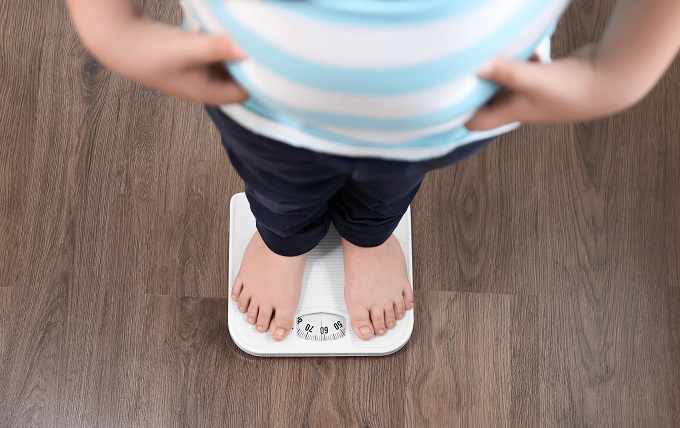
<h2>Auckland’s level of obesity in under-fives has continued to fall for the third year in a row but new data indicates children are putting on excess weight in their school years.</h2>
<p>While <em>Before School Checks</em> in 2016 recorded that a smaller percentage of the city’s four year olds were obese, other data showed this rate had increased for children aged up to 14 years.</p>
<p><a href="http://www.healthyaucklandtogether.org.nz/reports/monitoring-report-2018" target="_blank">Full report: www.healthyaucklandtogether.org.nz/reports/monitoring-report-2018 </a></p>
<p>The Healthy Auckland Together coalition has released its third monitoring report looking at levels of physical activity, weight and nutrition in the region’s population and whether our local environments and institutions are supporting healthy behaviour.</p>
<p>Coalition spokesperson Dr Michael Hale says measures like limits on screen time, encouraging physical play and healthy lunchbox policies seem to be keeping more pre-schoolers at a healthy weight.</p>
<blockquote>
<p>&#8220;However in the primary and secondary school years, we see a decline in the influence of parents, the pull of unhealthy food outside the home, and long hours spent watching screens. This is apparent in the rise in the levels of overweight and obese children up to the age of 14 years,&#8221; he says.</p>
</blockquote>
<p>The average weight of these children was 1.8 kilos heavier in 2017, at 35.7kg, compared with 2011, when the average was 33.9kg.</p>
<p>The steady increase in excess weight continues into adulthood, with one in three adults obese in the region in 2017. The higher rates of obesity in people living in areas of high socioeconomic deprivation in the city point to many causes.</p>
<blockquote>
<p>&#8220;Although economic and family stresses contribute to obesity, poorer neighbourhoods themselves can nudge people towards unhealthy behaviours.</p>
<p>&#8220;We know that suburbs with high socioeconomic deprivation have a greater concentration of fast food outlets compared with fruit and vegetable shops,&#8221; Dr Hale says.</p>
</blockquote>
<p>The data from checks of almost 80,000 children’s teeth show those living in the poorest neighbourhoods are 12 times more likely to have the worst oral health. While it is likely that excess sugar consumption is largely responsible, the low prices, high availability and heavy marketing of sugary products encourage this, Dr Hale says.</p>
<p>Poorer suburbs often have limited public transport and the city has many streets with busy traffic that feel less safe for walking and biking. As a result, residents have little choice but sit in their cars for long distances.</p>
<p>There are some suburbs with the space but not the sports and recreation infrastructure to support physical activity. Auckland Council’s recently announced $120 million Sport and Recreation Facilities Investment Fund is certainly needed to ensure all children are able to participate, Dr Hale says.</p>
<p>Another indicator of declining physical activity is a further drop in the number of children going to school by foot, bike, scooter or skateboard. While more children in high socioeconomic deprivation areas were previously active getting to school, at 56 percent in the years 2011 to 2014, they are now being dropped at the gates at similar rates to all other children. In the years 2014 to 2017 only 43 percent of these children travelled to school actively.</p>
<p>Children at school, especially secondary school, often have unhealthy food available in the tuckshop and in vending machines. Only half of primary schools and 11 percent of secondary schools have water only policies or restrict sales of high fat, high sugar food in the tuck shop.</p>
<blockquote>
<p>&#8220;The curriculum does teach about healthy nutrition, but then we ask children to sell chocolate as fundraisers,&#8221; Dr Hale says. Healthy Auckland Together would like to see schools required to follow healthy food and drink guidelines and be given support so these are implemented.</p>
</blockquote>
<p>Massey Primary School principal Bruce Barnes says a water only policy has made a noticeable change in lunch boxes. &#8220;Now 100 percent of students who used to bring sugary drinks to school are now opting for their water bottle,&#8221; he says.</p>
<p>Unfortunately obese children are more likely to become obese adults, as it is very hard to lose weight, says Dr Hale. &#8220;This is made more difficult as physical exertion is being eliminated from our jobs, our commuting and our leisure.&#8221;</p>
<p>Obesity is now the greatest risk driving death and disability in New Zealand, surpassing tobacco.</p>
<p>Healthy Auckland Together has a five year plan to improve the city’s food, urban, school, work and transport environments so it is easier for all children and adults to eat better and be active.</p>

EXCLUSIVE: Teachers used to be paid two to three times more than minimum wage workers,…
After an “overwhelming” vote to reject the latest Government offer, secondary school teachers will begin…
Second-language learning should be compulsory, says a new report from a forum bringing together academics,…
A new entitlement aimed to improve access to learning support coordinators for schools with students…
Educators have raised questions about the Ministry of Education’s new secondary school subjects, set to…
Professional learning and development (PLD) for teachers needs to be higher impact for teachers and…
This website uses cookies.